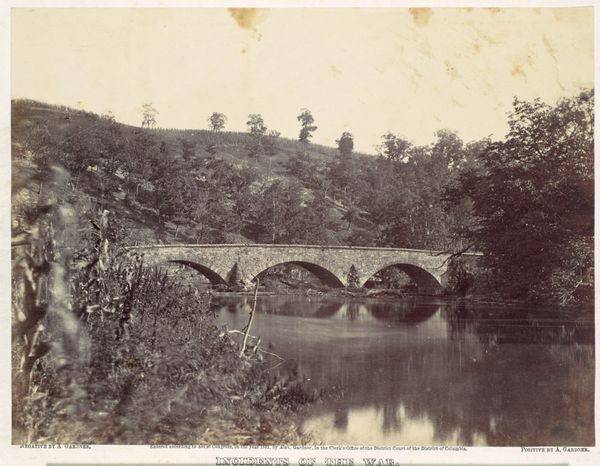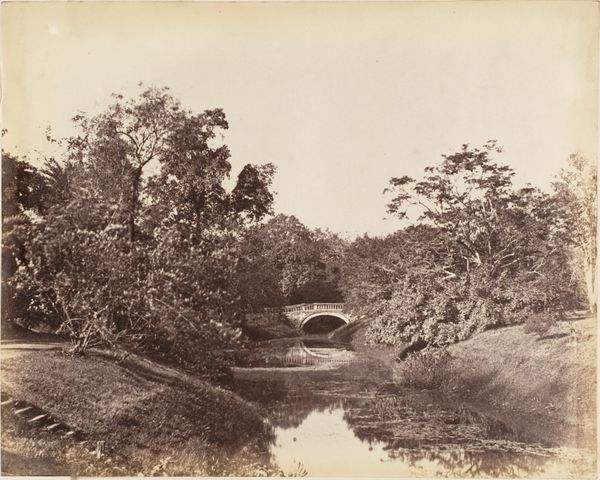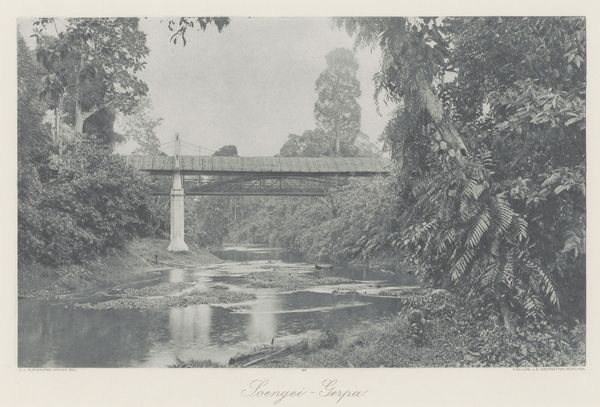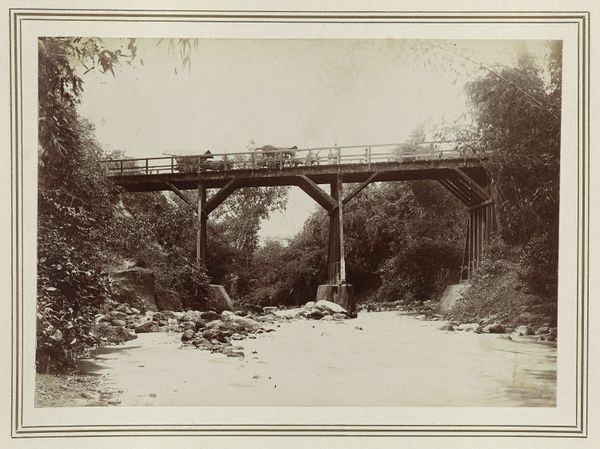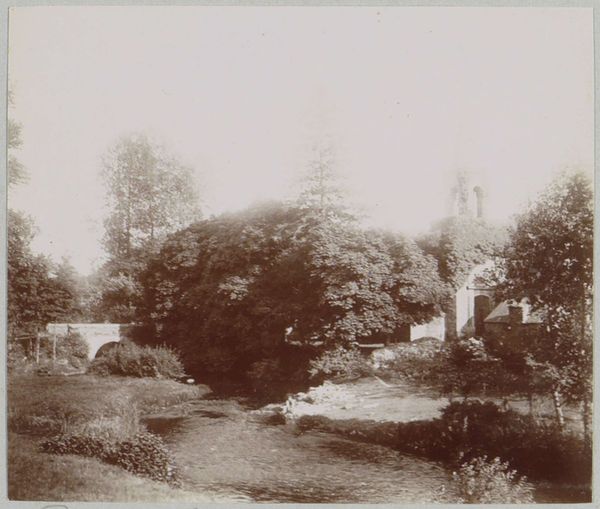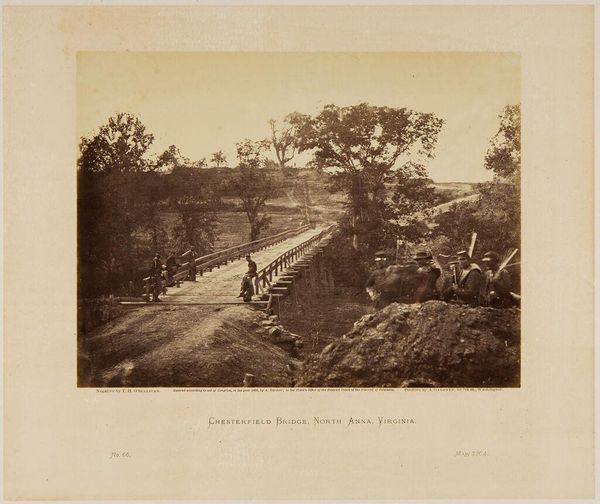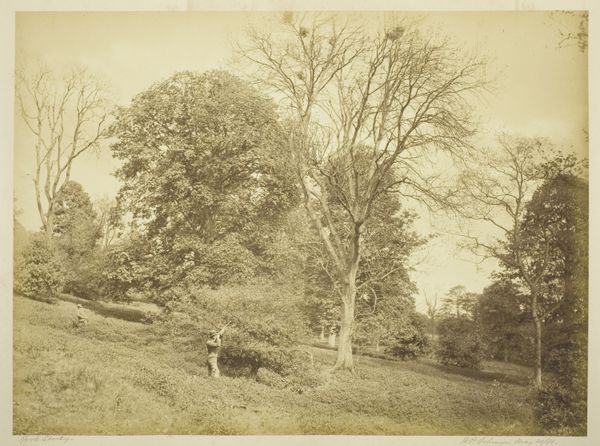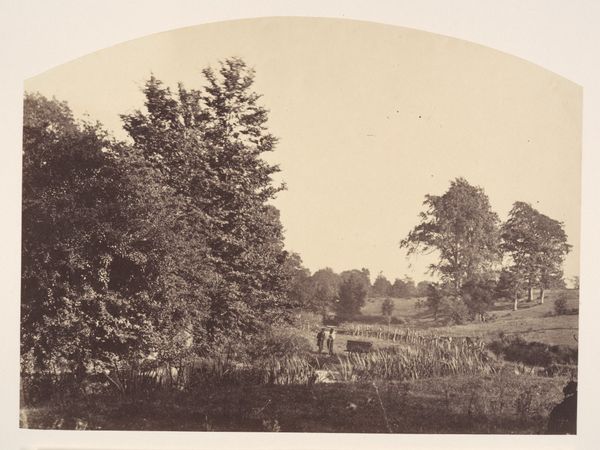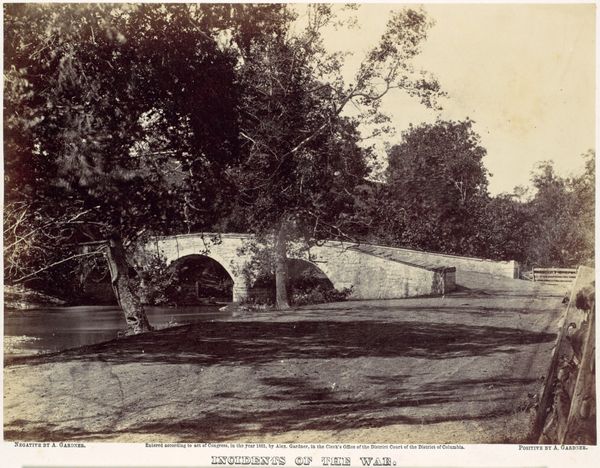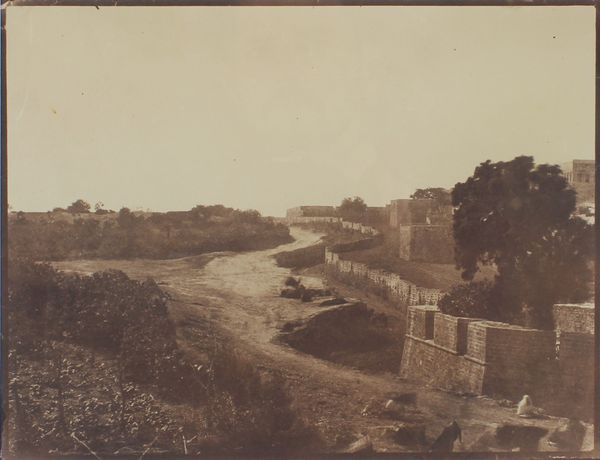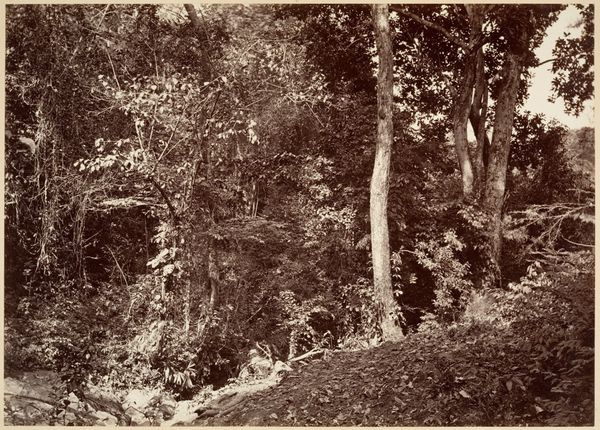
Burnside Bridge, Across Antietam Creek, Maryland 1862
0:00
0:00
print, photography
#
16_19th-century
# print
#
war
#
landscape
#
photography
#
hudson-river-school
#
united-states
#
history-painting
#
realism
Dimensions: 17.8 × 22.9 cm (image/paper); 31.2 × 44.6 cm (album page)
Copyright: Public Domain
Curator: Alexander Gardner’s 1862 photograph, “Burnside Bridge, Across Antietam Creek, Maryland,” shows a seemingly bucolic landscape. Editor: My first impression is somber, despite the natural beauty. The contrast feels muted, drained almost. There's a stillness, an absence that hints at something heavy. Curator: The materiality of this image interests me – albumen silver print, which in itself involves a complex and alchemical process of coating paper with egg whites, and silver nitrate, among other materials. It renders incredible detail; note the stone texture, the way light hits individual leaves. Editor: The bridge itself feels like a symbolic threshold. Stone bridges, particularly in wartime imagery, often signify the passage from one state to another, perhaps life to death in this case, given the infamous battle. The dark vegetation encroaching suggests a kind of sorrowful embrace. Curator: Yes, the context is crucial. This serene scene was taken shortly after the Battle of Antietam, one of the bloodiest single-day battles in American history. The making of such images becomes almost documentary. Consider the logistics – transporting bulky equipment to a battlefield… the labor involved to document a crucial turning point. Editor: The creek itself…water often symbolizes purification or the cleansing of sins. However, here, it appears still, reflecting the overhanging darkness, perhaps indicating a different sort of spiritual consequence in the wake of intense conflict. A stillness reflecting unatoned trauma. Curator: I think your reading is perceptive. Gardner and his team aimed to depict the unvarnished reality of war. It's interesting how even an apparently 'empty' landscape becomes a repository for that, made possible by specific chemicals and the very human act of looking, selecting, and framing. Editor: And within that frame, we, generations later, seek out the echoes, the palimpsest of meaning etched into the image, hoping to better understand not just what happened there, but the long reverberations of history, both on land, and upon the soul. Curator: A haunting reflection, literally captured by a specific technological process. It makes me reconsider our understanding of value within art as well as labor. Editor: Indeed, a lasting meditation.
Comments
No comments
Be the first to comment and join the conversation on the ultimate creative platform.
